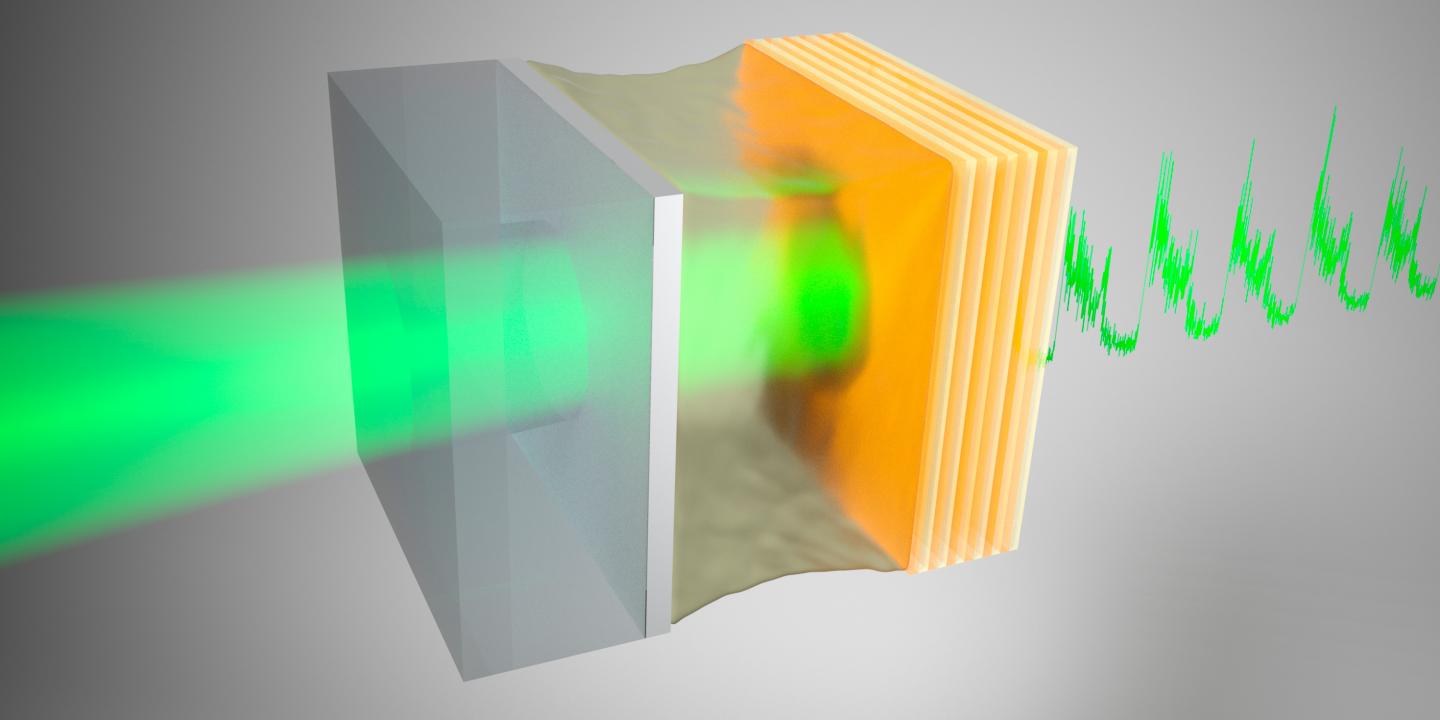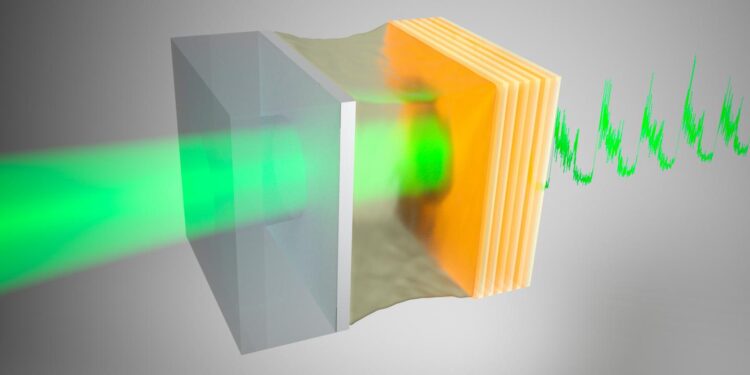AMOLF scientists unravel noise-assisted signal amplification in systems with memory

Credit: AMOLF Interacting Photons group
Signals can be amplified by an optimum amount of noise, but this so-called stochastic resonance is a rather fragile phenomenon. Researchers at AMOLF were the first to investigate the role of memory for this phenomenon in an oil-filled optical microcavity. The effects of slow non-linearity (i.e. memory) on stochastic resonance were never considered before, but these experiments suggest that stochastic resonance becomes robust to variations in the signal frequency when systems have memory. This has implications in many fields of physics and energy technology. In particular, the scientists numerically show that introducing slow non-linearity in a mechanical oscillator harvesting energy from noise can increase its efficiency by tenfold. They publish their findings in Physical Review Letters on May 27th.
It is not easy to concentrate on a difficult task when two people are having a loud discussion right next to you. However, complete silence is often not the best alternative. Whether it is some soft music, remote traffic noise or the hum of people chatting in the distance, for many people, an optimum amount of noise enables them to concentrate better. “This is the human equivalent of stochastic resonance”, says AMOLF group leader Said Rodriguez. “In our scientific labs stochastic resonance happens in non-linear systems that are bistable. This means that, for a given input, the output can switch between two possible values. When the input is a periodic signal, the response of a non-linear system can be amplified by an optimum amount of noise using the stochastic resonance condition.”
Ice ages
In the 1980’s stochastic resonance was proposed as an explanation for the recurrence of ice ages. Since then, it has been observed in many natural and technological systems, but this wide-spread observation poses a puzzle to scientists. Rodriguez: “Theory suggests that stochastic resonance can only occur at a very specific signal frequency. However, many noise-embracing systems live in environments where signal frequencies fluctuate. For example, it has been shown that certain fish prey on plankton by detecting a signal they emit, and that an optimum amount of noise enhances the fish’s ability to detect that signal through the phenomenon of stochastic resonance. But how can this effect survive fluctuations in the signal frequency occurring in such complex environments?”
Memory effects
Rodriguez and his PhD student Kevin Peters who is the first author of the paper, were the first to demonstrate that memory effects must be taken into account to solve this puzzle. “The theory of stochastic resonance assumes that non-linear systems respond instantaneously to an input signal. However, in reality most systems respond to their environment with a certain delay and their response depends on all that happened before”, he says. Such memory effects are difficult to describe theoretically and to control experimentally, but the Interacting Photons group at AMOLF has now managed both. Rodriguez: “We have added a controlled amount of noise to a beam of laser light and have shined it on a tiny cavity filled with oil, which is a non-linear system. The light causes the temperature of the oil to rise, and its optical properties to change, but not immediately. It takes about ten microseconds, thus the system is non-instantaneous as well. In our experiments, we have shown for the first time that stochastic resonance can occur over a broad range of signal frequencies when memory effects are present.”
Energy harvesting
Having thus shown that the widespread occurrence of stochastic resonance may be due to yet unnoticed memory dynamics, the researchers hope that their results will inspire colleagues in several other fields of science to search for memory effects in in their own systems. To extend the impact of their findings, Rodriguez and his team have theoretically investigated the effects of non-instantaneous response on mechanical systems for energy harvesting. “Small piezo-electric devices that harvest energy from vibrations are useful when battery replacement is difficult, for example in pacemakers or other biomedical devices”, he explains. “We have found a tenfold increase in the amount of energy that could be harvested from environmental vibrations, if memory effects would have been incorporated.”
The obvious next step for the group is to expand their system with several connected oil-filled cavities and investigate collective behavior emerging from noise. Rodriguez does not fear stepping outside his scientific comfort zone. He says: “It would be great if we could team up with researchers that have expertise in mechanical oscillators. If we can implement our memory effects in those systems, the impact on energy technology will be enormous.”
###
Reference
K. J. H. Peters, Z. Geng, K. Malmir, J. M. Smith and S. R. K. Rodriguez, Extremely Broadband Stochastic Resonance of Light and Enhanced Energy Harvesting 3 Enabled by Memory Effects in the Nonlinear Response, Physical Review Letters, 126, 213901 (2021), doi:10.1103/PhysRevLett.126.213901
Media Contact
Said RK Rodriguez
[email protected]
Original Source
https:/
Related Journal Article
http://dx.





